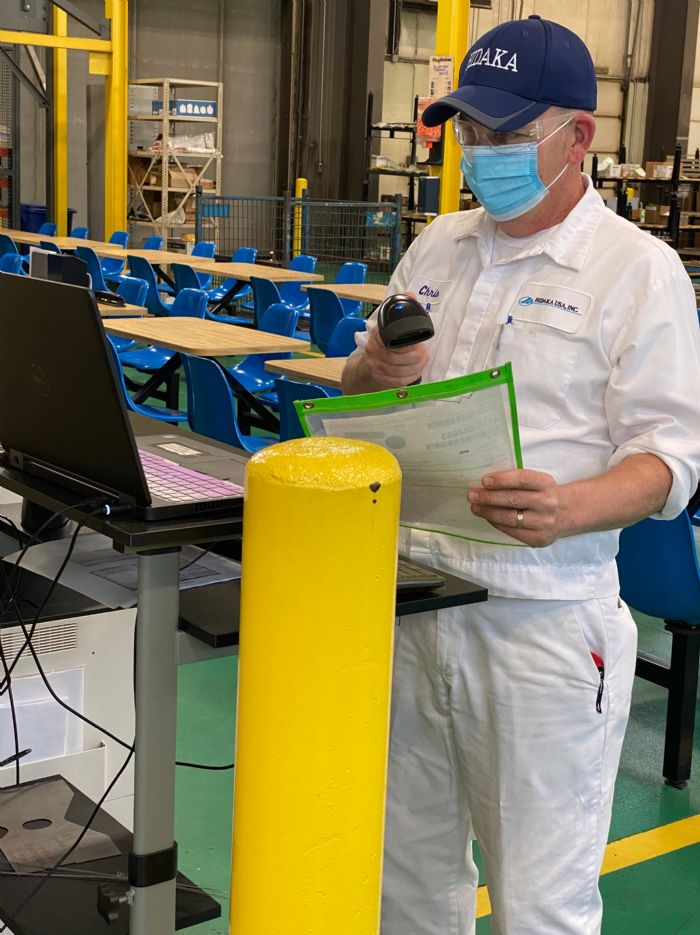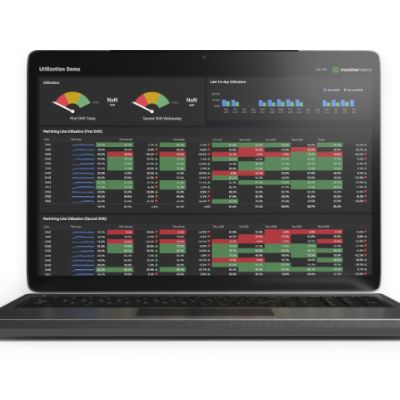“That’s when we finally decided to invest in the Aim Mobility physical-inventory app, to integrate with Aim Vision,” says Jenkins. Aim Mobility is a collection of apps that run on Android-based tablets and use Wi-Fi and Bluetooth technology to communicate with and collect data from barcode scanners located on the plant floor. The consistent flow of data produces cycle and physical inventory counts in real time.
“We were able to install and implement a pair of barcode-scanning stations and go live with Aim Mobility in just one day,” says Rosso.
Aim Mobility encompasses a series of apps:
- Dock Audit allows users to flag parts, shipments to destinations and orders requiring a final quality inspection on the shipping dock.
- Clipboard delivers workcenter and operator production intelligence with real-time entry and updating functions, all from a hand-held tablet.
- Location Tracking gives real-time intelligence about the location of items or products on the plant floor.
- Receiving simplifies how manufacturers receive product into the warehouse.
“When we went live with Mobility,” recalls Jenkins, “our team scanned some 4200 items. Our direct labor for inventory went from 320 man-hr. down to 160 man-hr. Then, we accomplished the second-year full physical inventory in just 104 hr.”
Before adding the Mobility app, it might have taken several days for an operator to manually enter data gathered from the inventory process into the Vision ERP system. “Information was outdated before we could enter it,” says Jenkins, “and we may not have identified inaccuracies until weeks after we completed the inventory process.”
Finally, Rosso estimates that the cost to conduct inventory dropped by some 30 percent. “More importantly,” she adds, “we have a high level of confidence in using the data to schedule our production. When a customer asks when we can fulfill an order, we quickly can check the system to identify what materials are available, and immediately plan production to satisfy the customer’s needs.”
Visibility into the Production Process
More accurate inventory data helps Hidaka to purchase raw materials more effectively, but just as critical, accurate inventory tracking drives the integrity of the production schedule.
“We can log on to the system and see how work is progressing through the plant, quickly identify where we might be behind schedule, and send resources to hot spots to keep the jobs moving and stay on time,” says Rosso.
“In addition, our customers now have more confidence in the accuracy of our job quotes,” Rosso continues. “Our engineer preparing quotes can immediately log into the app and see how much we charged for a part in the past, what our real costs were, how much the raw material cost, etc.”
Next Steps
On the minds of Rosso and Jenkins to continue finding ways to leverage the Aim software systems to improve operations: equipment predictive-maintenance scheduling, and tracking pressroom activity to proactively schedule die maintenance.
“We’ve started to gather data on die use and maintenance activity in the die shop,” Rosso says,” and are entering the data into the ERP system. The next step is to learn how to best use the data to improve operations. We also plan to start tracking the operating hours of presses and other machines in the shop, log the number of hours it takes to run specific jobs, and use the data to develop a maintenance schedule for every machine.
“Lastly,” she adds, “we’ve started to conduct time studies on certain jobs in the shop, and for different operators, to look for ways to improve our efficiency. By recording that data and having it available in the ERP system, we’ll be able to more accurately schedule the shop, and it also should help us better understand our costs.” MF
See also: AIM Computer Solutions, Inc.
Technologies: Management







 Hidaka USA opened in 1989 in Dublin, OH, primarily to supply prototypes and high-volume production components to the automotive industry, now also supplies to the railcar industry, the result of efforts to diversify its customer base dating back to 2008-2009, explains Rosso.
Hidaka USA opened in 1989 in Dublin, OH, primarily to supply prototypes and high-volume production components to the automotive industry, now also supplies to the railcar industry, the result of efforts to diversify its customer base dating back to 2008-2009, explains Rosso. 

